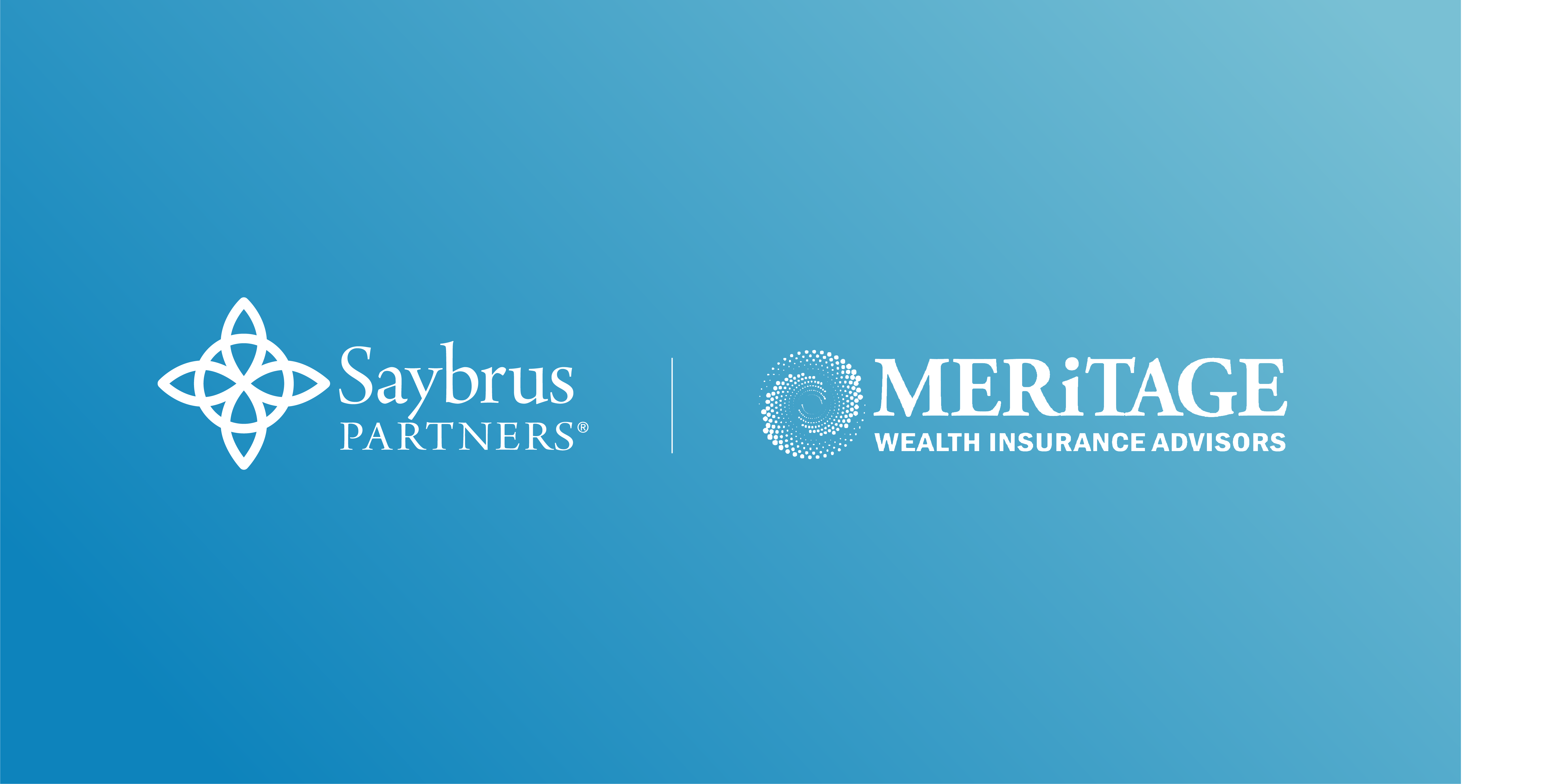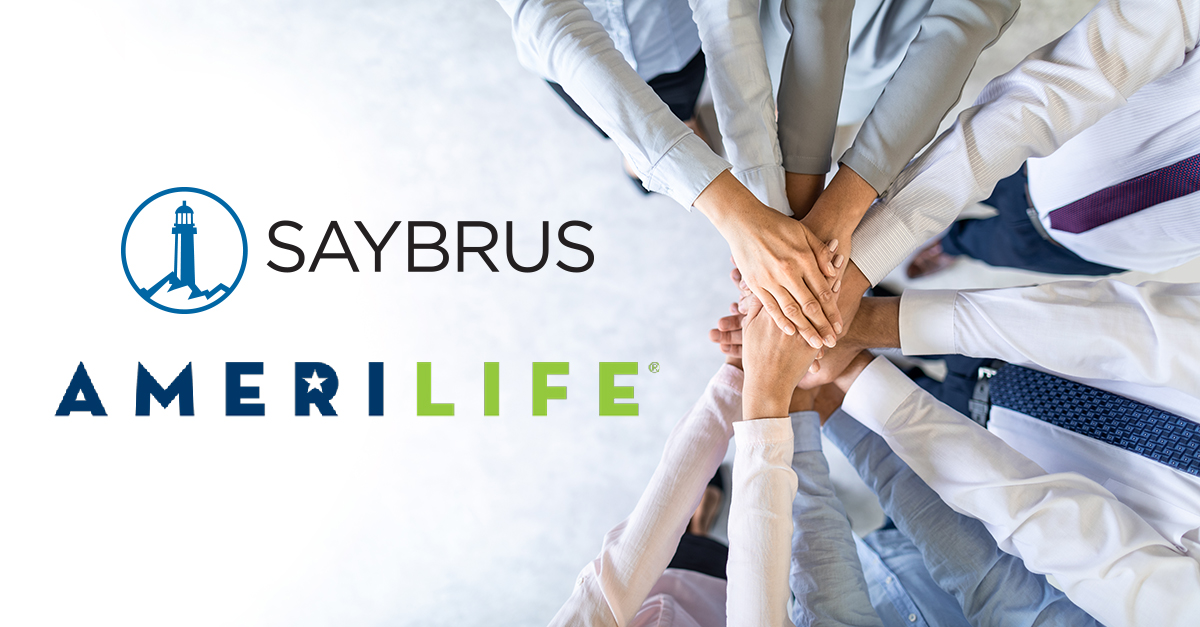HARTFORD, Conn. and CLEARWATER, Fla. – May 16, 2024 – Saybrus Partners (“Saybrus”), a market leader in life and annuity distribution and an affiliate of AmeriLife Group, LLC (“AmeriLife”), announced today that it has entered into a partnership with Meritage Wealth Insurance Advisors (“Meritage”), a point-of-sale (POS) focused, national life insurance general agency that serves financial professionals across a spectrum of life, annuity, retirement, legacy and business/executive benefits planning solutions. Per the agreement, terms of the deal were not disclosed.
“Meritage Wealth Insurance Advisors’ experience and success in the life insurance industry, sophisticated planning expertise, and strong operational capabilities make the firm an exciting complement to our business,” said Edward W. Cassidy, managing principal of Saybrus Partners. “I’m happy to welcome Meritage’s leadership team and employees to the Saybrus family, and look forward to our work together.”
Founded in 2019 by a team of five industry veterans, Meritage has built a national reputation for expertly designed solutions and consistently exceeding expectations for the most sophisticated and complex client relationships. Among other capabilities, including point-of-sale support, Meritage’s full-service model offers access to advanced case design, deep carrier relationships and product options, and back-office and underwriting support. With over 100 years of combined experience, Meritage’s partners have built a company that is passionate about client service delivered through a high-touch, consultative approach that has helped the firm stand apart in the industry.
“We are thrilled to be joining this industry-leading organization,” said Chuck Adam, one of Meritage’s founding partners. “Not only did we immediately connect with Saybrus’ culture and team, but the company’s strong track record, robust resources and long-standing relationships make it a great strategic fit for our firm.”
Together with Saybrus, Meritage also becomes part of a fast-growing AmeriLife Wealth Group, a new kind of wealth distribution platform that aims to deliver a suite of best-in-class services to the modern agent and financial professional to ensure their clients – no matter their stage of life – never outgrow them.
“Meritage brings all the components we look for in new wealth distribution partners and we’re thrilled to welcome them to the AmeriLife family of companies,” said Mike Vietri, Chief Distribution Officer for AmeriLife Wealth Group. “Indeed, Meritage is the perfect complement to Saybrus, and I have no doubt that – with the support of Ed and his team – Meritage will take an already stellar track record of growth and success to new heights.”
Under Saybrus, the firm will continue to operate as a standalone company from its Cypress, Texas headquarters, led by its five founding partners who will report to Cassidy.
###
About Meritage Wealth Insurance Advisors
Meritage is a National Insurance General Agency with full support for client advisors managing important, sophisticated client relationships. Partnering with private and institutional practices, its team brings expertise in Family Planning, Legacy Planning, Retirement Planning and Business Planning. The firm’s comprehensive capabilities comprise point of sale consultation, advanced case design access, solutions from numerous life insurance carriers, high-end underwriting expertise and experienced case facilitation. For more information, visit www.meritagewia.com.
About Saybrus Partners
Saybrus Partners, LLC helps institutions and financial professionals address clients’ needs with insurance and annuity solutions for basic protection as well as retirement, estate and business planning. Its partner firms include institutional financial advisories, insurance retailers, banks and broker/dealers. Customizing its services to best fit its partners’ businesses, the company offers a complete set of distribution capabilities including assisted sales, traditional wholesaling, new business operations and custom product design. For more information, visit www.saybruspartners.com and follow Saybrus on LinkedIn.
About AmeriLife
AmeriLife’s strength is its mission: to provide insurance and retirement solutions to help people live longer, healthier lives. In doing so, AmeriLife has become recognized as the leader in developing, marketing, and distributing life and health insurance, annuities, and retirement planning solutions to enhance the lives of pre-retirees and retirees across the United States. For more than 50 years, AmeriLife has partnered with top insurance carriers to provide value and quality to customers served through a distribution network of over 300,000 insurance agents and financial professionals and more than 100 marketing organizations and insurance agency locations nationwide. For more information, visit AmeriLife.com, and follow AmeriLife on Facebook and LinkedIn.
 SAYBRUS NEWS
SAYBRUS NEWS











Recent Comments